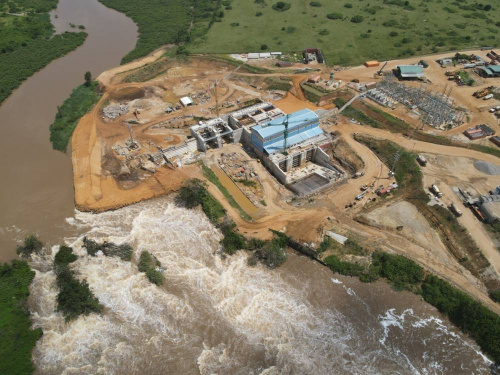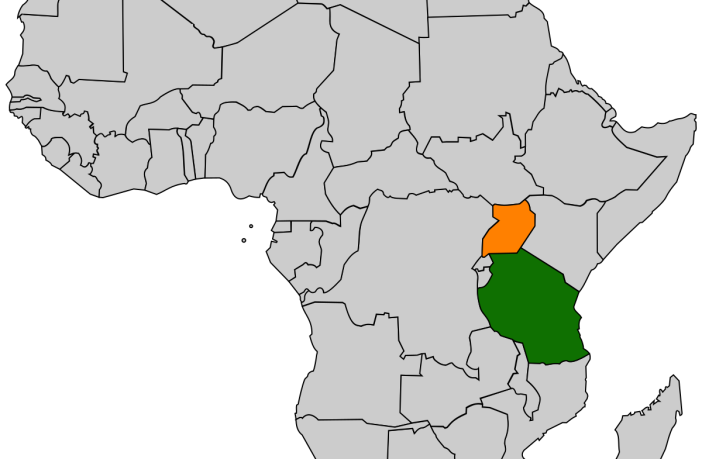- The 15.57 MW Kikagati hydroelectric power plant is nearing final commissioning by its owners, the Kikagati Power Company (KPC).
- The US$ 87 million run-of-the-river hydroelectric plant is located at Kikagati on the Kagera River between Uganda and Tanzania.
- The Kagera River is the main tributary to Lake Victoria and the river basin area lies within Rwanda, Burundi, Tanzania and Uganda.
- The power generated will supply both countries.
Construction of the plant started in August 2019. The plant consist of an 8.5m-high dam of 300m in length, three turbines of 5.19 MW each and associated earthworks, control and plant rooms and allied infrastructure connecting the plant via a 33 kV line to switchyards in Uganda and Tanzania. Around 250 people were involved in the construction works.
Voith Hydro supplied and installed the three 5.19 MW turbines.

The 15.57 MW Kikagati hydroelectric power plant as it was under construction. Image credit: Berkely Energy
The Kikagati hydroelectric plant has a capacity of 15.57 MW. Its dam is located on the Kagera River, the largest tributary of Lake Victoria, which serves as the natural border between Tanzania and Uganda. The dam is 8.5 m high and 300 m long, forming a reservoir on 4 km2 of Tanzanian territory. The electricity produced by the hydroelectric plant is evacuated via a 33 kV line.
KPC will sell its output to Uganda Electricity Transmission Company Limited (UETCL and Tanzania Electric Supply Company (TANESCO). The project, which is nearing final completion, will add up to 115 GWh of electricity per year to the power grids of both countries.
Author: Bryan Groenendaal
















1 Comment
Pingback: press new - PAC S.p.A.